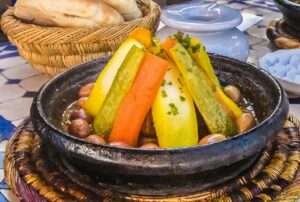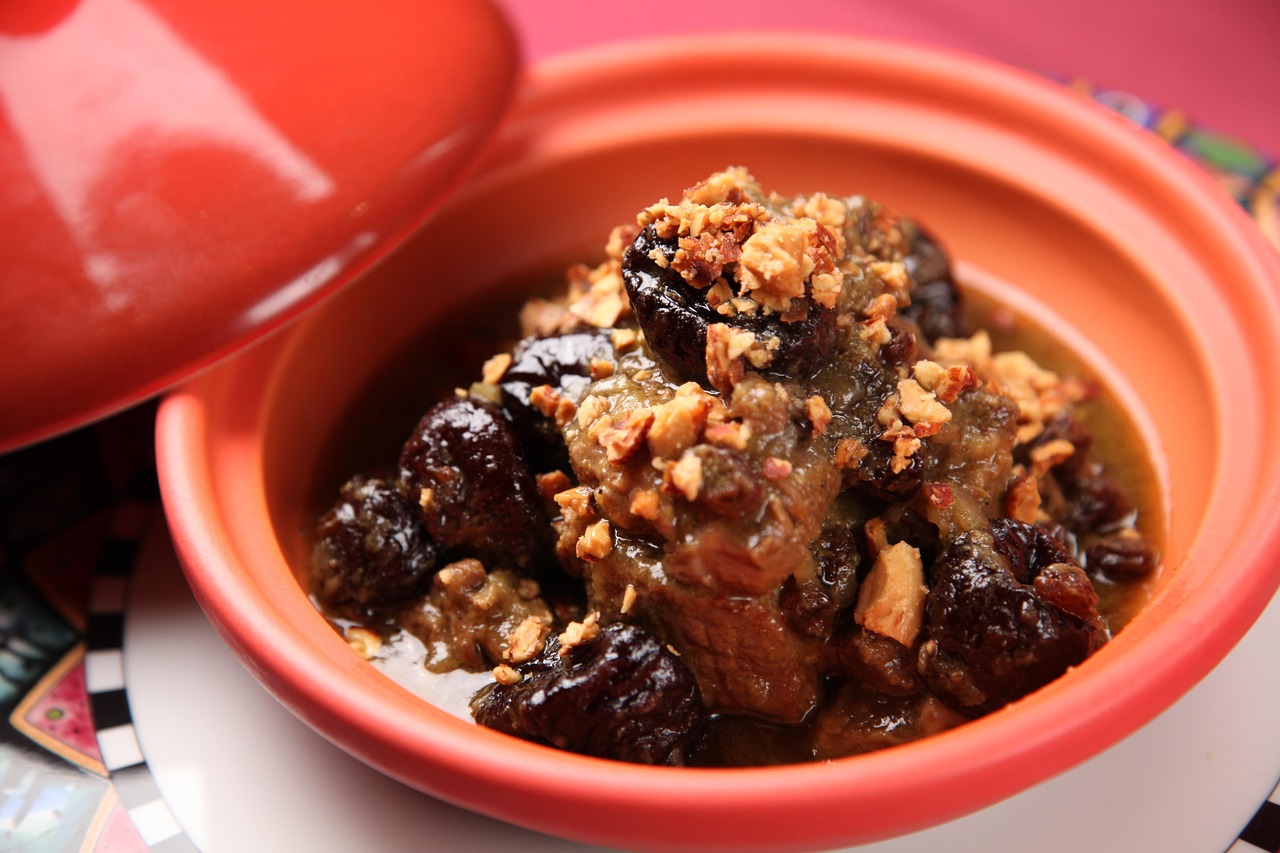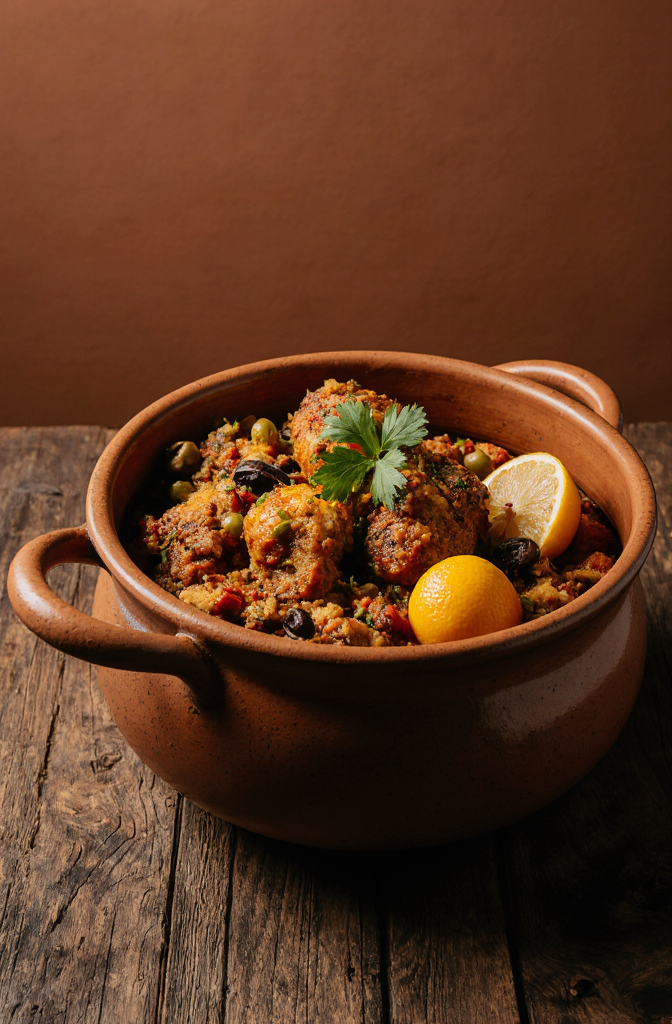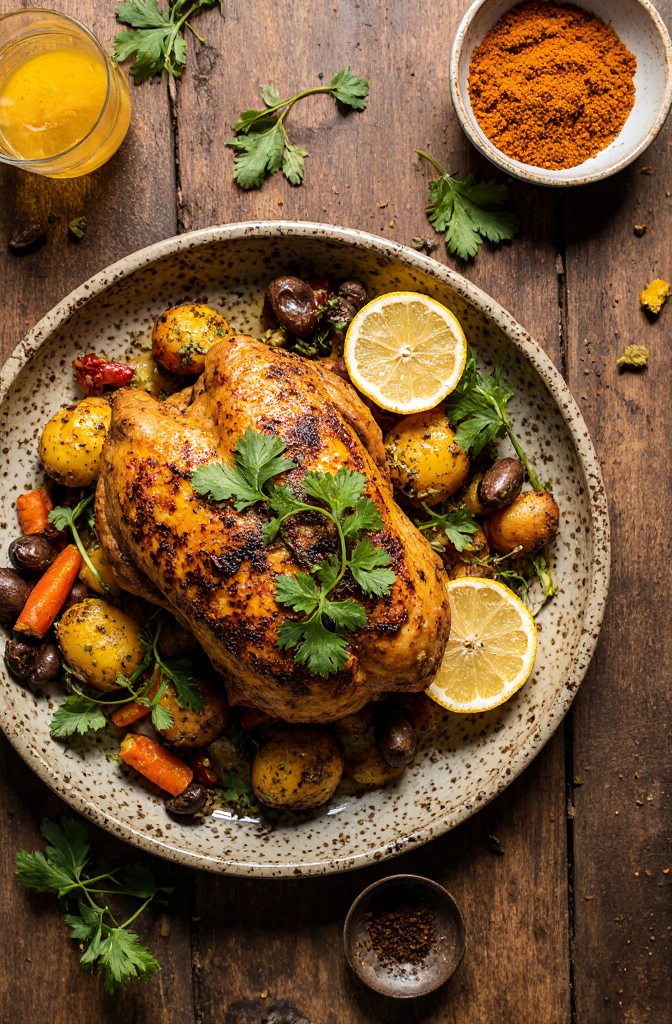Ultimate Moroccan Tagine: 15 Incredible Authentic Recipes & Exclusive Cooking Secrets
Introduction
Moroccan Food tagine represents one of the most iconic dishes in North African cuisine, captivating food lovers worldwide with its rich flavors, aromatic spices, and unique cooking method. This traditional Moroccan stew, named after the distinctive cone-shaped clay pot in which it’s cooked, has been a cornerstone of Moroccan culinary culture for centuries.
What is a Moroccan Tagine?
A tagine refers to both the cooking vessel and the slow-cooked stew prepared within it. The traditional tagine pot consists of a flat, circular base with a distinctive conical lid that creates a unique steam circulation system. This design allows ingredients to cook gently in their own juices, creating incredibly tender and flavorful dishes.
The word “tagine” comes from the Berber language, reflecting the dish’s deep roots in North African culture. Today, Moroccan tagine has become synonymous with the country’s rich culinary heritage and is enjoyed in restaurants and homes across the globe.
History and Cultural Significance of Tagine
The origins of tagine cooking can be traced back over 1,000 years to the Berber tribes of North Africa. These nomadic people developed this cooking method as a practical solution for preparing meals with limited water resources in the desert. The cone-shaped lid of the tagine pot traps steam and returns condensed water back to the dish, making it an efficient cooking method in arid climates for best Moroccan Tagine.

Throughout Moroccan history, tagine has evolved from a practical cooking necessity to an art form. Different regions of Morocco developed their own signature tagine recipes, incorporating local ingredients and spice combinations that reflect their unique terroir and cultural influences.
Types of Moroccan Tagine
Meat Tagines
Chicken Tagine with Preserved Lemons and Olives This classic combination features tender chicken slow-cooked with the distinctive tangy flavor of preserved lemons and briny olives, seasoned with ginger, saffron, and cilantro.
Beef Tagine with Prunes and Almonds A sweet and savory masterpiece that combines succulent beef with dried fruits, creating a complex flavor profile that’s both comforting and exotic.
Lamb Tagine with Apricots This popular variation showcases the Moroccan talent for balancing meat with fruit, where tender lamb is enhanced by the natural sweetness of dried apricots.
Vegetarian Tagines
Vegetable Tagine A colorful medley of seasonal vegetables such as carrots, zucchini, bell peppers, and potatoes, slow-cooked with traditional Moroccan spices.
Chickpea Tagine A protein-rich option featuring tender chickpeas combined with vegetables and aromatic spices, perfect for vegetarian and vegan diets.
Seafood Tagines
Fish Tagine with Chermoula Fresh fish marinated in chermoula (a traditional Moroccan herb and spice mixture) and cooked with vegetables for a lighter but equally flavorful option.
Essential Ingredients in Moroccan Tagine
Spices and Seasonings
The soul of any authentic Moroccan tagine lies in its spice blend. Key spices include:
- Ras el Hanout: A complex spice mixture that can contain up to 30 different spices
- Saffron: Provides a distinctive color and delicate flavor
- Ginger: Adds warmth and depth
- Cinnamon: Contributes sweetness and complexity
- Cumin: Offers earthy, nutty notes
- Paprika: Provides color and mild heat
- Turmeric: Adds golden color and subtle flavor
Fresh Ingredients
- Preserved Lemons: A staple in Moroccan cooking, providing unique tangy flavor
- Fresh Herbs: Cilantro, parsley, and mint are commonly used
- Onions: Form the aromatic base of most tagine recipes
- Garlic: Essential for building flavor layers
- Tomatoes: Add acidity and depth
Proteins and Vegetables
Traditional tagine recipes incorporate various proteins including chicken, lamb, beef, and fish, along with seasonal vegetables that complement the chosen protein and spice combination.
How to Cook Authentic Moroccan Tagine
Traditional Cooking Method
- Prepare the Tagine Pot: Season a new clay tagine by soaking it in water and gradually heating it to prevent cracking.
- Build Flavor Layers: Start by sautéing onions and garlic in olive oil at the bottom of the tagine.
- Add Protein: Brown meat or prepare fish/vegetables according to your chosen recipe.
- Layer Ingredients: Arrange vegetables and fruits around the protein, creating an attractive presentation.
- Season Generously: Apply spice mixtures and add liquid (usually broth or water) sparingly.
- Slow Cook: Cover with the conical lid and cook over low heat for 1-3 hours, depending on ingredients.
Modern Adaptations
While traditional clay tagine pots provide the most authentic results, modern cooks can adapt tagine recipes for:
- Slow Cookers: Convenient for busy schedules
- Dutch Ovens: Provide similar results to traditional tagines
- Oven Cooking: Using covered casserole dishes
- Stovetop Methods: With heavy-bottomed pots and tight-fitting lids
Health Benefits of Moroccan Tagine
Moroccan tagine offers numerous nutritional advantages:
Nutrient Density
The slow-cooking method preserves vitamins and minerals while the diverse ingredients provide a wide range of nutrients.
Antioxidant Properties
Many tagine spices, including turmeric, ginger, and cinnamon, contain powerful antioxidants that support overall health.
Lean Protein Sources
Traditional tagine recipes often feature lean meats and legumes, providing high-quality protein.
Healthy Cooking Method
The steam-cooking technique requires minimal added fats while preserving natural flavors and nutrients.
Tips for Perfect Tagine Cooking
Choosing the Right Tagine Pot
- Clay Tagines: Provide authentic flavor but require careful maintenance
- Ceramic Tagines: More durable and easier to clean
- Cast Iron Tagines: Excellent heat retention and durability
Essential Cooking Tips
- Always cook on low heat to prevent burning
- Don’t lift the lid frequently during cooking
- Allow ingredients to create their own steam
- Layer ingredients thoughtfully for even cooking
- Let the tagine rest before serving to allow flavors to meld
Common Mistakes to Avoid
- Using too high heat, which can crack clay tagines
- Adding too much liquid, which dilutes flavors
- Overcrowding the pot, preventing proper steam circulation
- Neglecting to properly season new clay tagines
Serving and Presentation
Traditional Moroccan tagine is served directly from the cooking pot, placed in the center of the table for communal dining. It’s typically accompanied by:
- Moroccan Bread: For scooping up the delicious sauce
- Couscous: A classic side dish that complements tagine perfectly
- Fresh Salads: Such as Moroccan tomato and onion salad
- Mint Tea: The traditional beverage to conclude the meal
Regional Variations Across Morocco
Fez Style Tagines
Known for their sophisticated spice blends and elegant presentations, often featuring complex fruit and nut combinations.
Marrakech Tagines
Tend to be heartier and more rustic, with bold flavors and generous portions.
Coastal Variations
Feature more seafood and lighter preparations, influenced by Mediterranean cooking styles.
Atlas Mountains Style
Emphasize preserved meats and dried fruits, reflecting the region’s traditional preservation methods.
Where to Experience Authentic Moroccan Tagine
In Morocco
- Local Homes: The most authentic experience through homestays or cooking classes
- Traditional Restaurants: Family-run establishments in medinas
- Riads: Boutique hotels offering traditional Moroccan cuisine
International Options
- Moroccan Restaurants: Found in major cities worldwide
- Cooking Classes: Learn to make tagine at home
- Food Festivals: Cultural events celebrating Moroccan cuisine
Conclusion
Moroccan tagine represents more than just a cooking method or a delicious meal—it’s a window into centuries of culinary tradition and cultural heritage. Whether you’re exploring the bustling souks of Marrakech or recreating these flavors in your own kitchen, understanding and appreciating tagine cooking connects you to one of the world’s most treasured culinary traditions.
The beauty of Moroccan tagine lies in its versatility, healthful preparation method, and ability to bring people together around a shared meal. As you embark on your own tagine cooking journey, remember that like all great culinary traditions, mastery comes with practice, patience, and a willingness to experiment with flavors and techniques.
From its humble beginnings as a practical desert cooking method to its current status as a globally celebrated cuisine, Moroccan tagine continues to evolve while maintaining its essential character. Whether you prefer the classic chicken with preserved lemons or adventurous combinations of your own creation, tagine cooking offers endless possibilities for culinary exploration and enjoyment.




